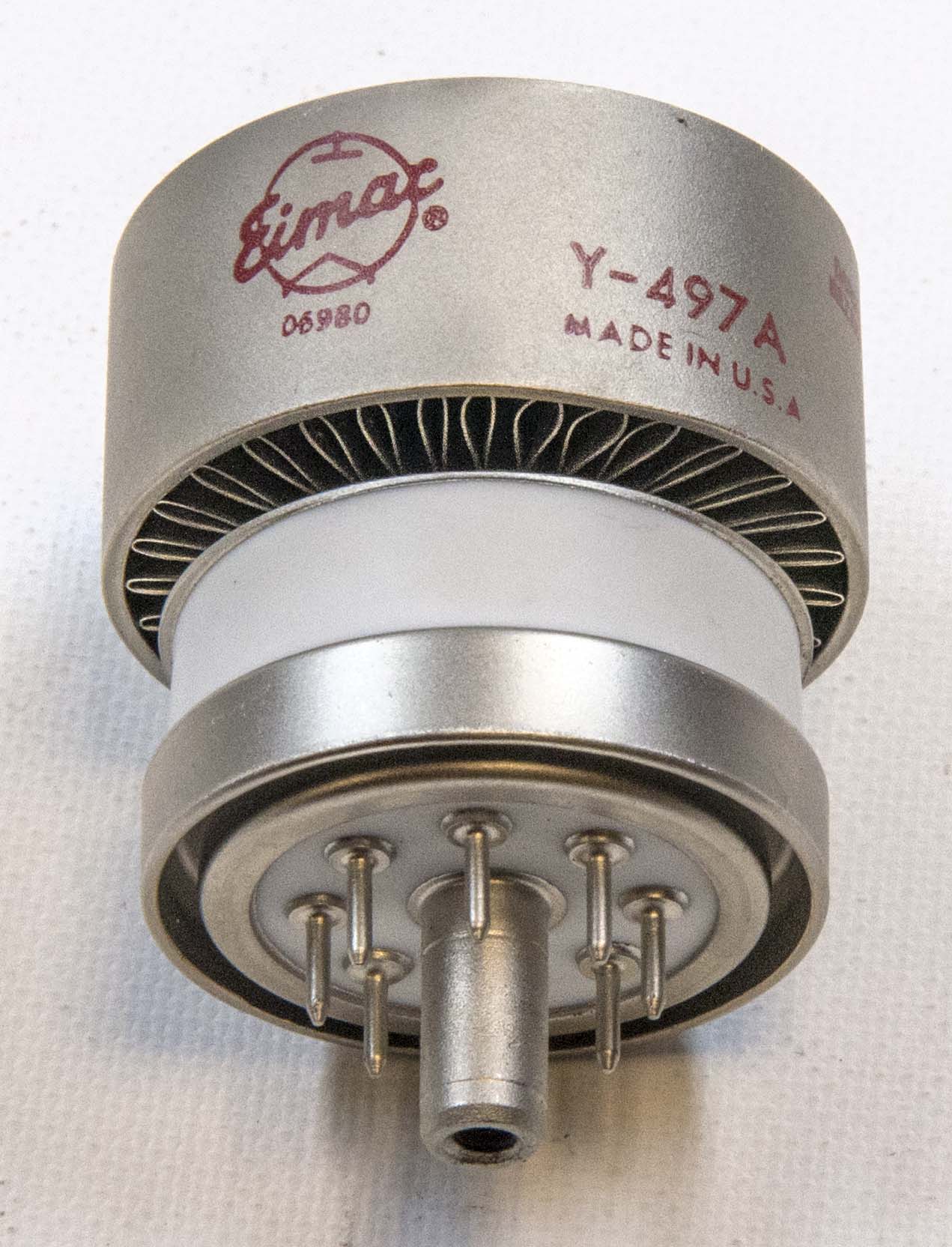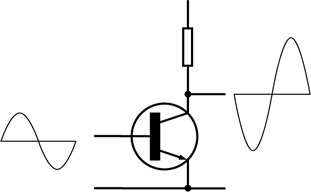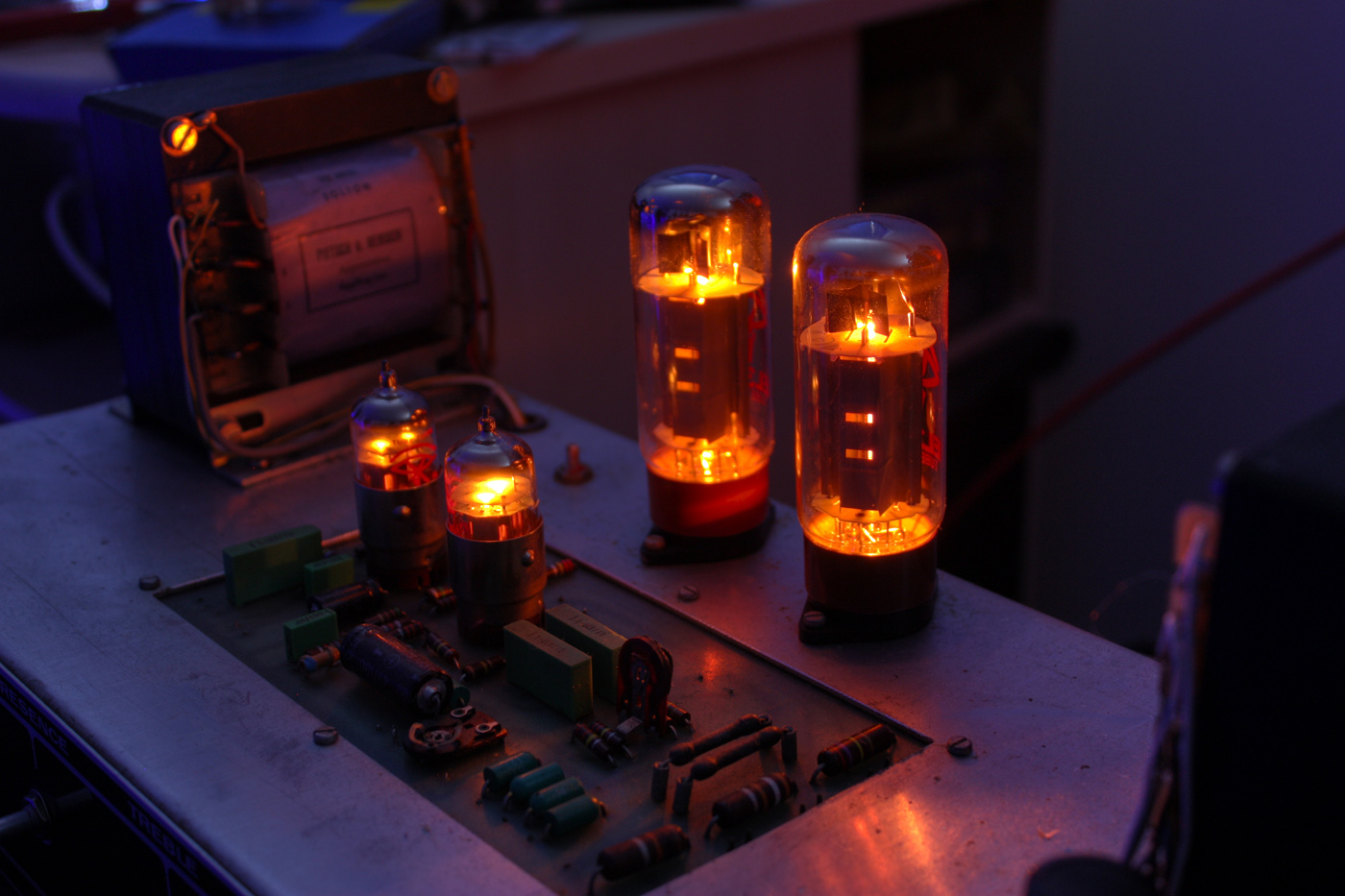|
6AQ5
The 6AQ5 (Mullard–Philips tube designation EL90) is a miniature 7-pin (B7G) audio power output beam tetrode vacuum tube with ratings virtually identical to the 6V6 at 250 V. It was commonly used as an output audio amplifier in tube TVs and radios. There are versions of this tube with extended ratings for industrial application which are designated as 6AQ5A (with controlled heater warm-up characteristic), and 6AQ5W/6005 or 6005W (shock and vibration resistant). A push–pull pair is capable of producing at least 10W audio output power in class AB1. Other close or equivalent tube types are: 6HG5, 6HR5, 6669, 6BM5, N727, CV1862 and the Tesla 6L31. The 6CM6, like the Russian 6P1P (6П1П), ''CCCP'' Output Beam Tetrode, 1970 (in Russian and English) while electrically equivalent (up to 250 V anode voltage), have a 9 pin (B9A) base ... [...More Info...] [...Related Items...] OR: [Wikipedia] [Google] [Baidu] |
6P1P
The 6P1P (Russian: 6П1П) is a Soviet-made miniature 9-pin beam tetrode vacuum tube with ratings similar to the 6AQ5, EL90 and the 6V6. Because of a different pinout (a 9-pin base versus 7-pin base) than an 6AQ5/EL90, it cannot be used as a plug-in replacement for these types; however, it will work in the same circuit with component values unchanged. Its maximum plate/screen voltage and dissipation ratings are actually slightly higher than a 6AQ5. A ruggedized/extended ratings version of the tube is designated 6P1P-EV (Russian: 6П1П-ЕВ), roughly equivalent to the 6AQ5W. A Chinese-manufactured version of the tube also exists, labeled 6P1. The type was commonly used in Soviet-built vacuum tube radios and TV sets as an output audio amplifier, until it was replaced by the higher-performance 6P14P (an exact equivalent of the EL84). In some old soviet TV sets (mainly before 1960 on 70 degrees deflection picture tubes), it was also used as frame output tube, until more specialized ... [...More Info...] [...Related Items...] OR: [Wikipedia] [Google] [Baidu] |
List Of Vacuum Tubes
This is a list of vacuum tubes or ''thermionic valves'', and low-pressure gas-filled tubes, or ''discharge tubes''. Before the advent of semiconductor devices, thousands of tube types were used in consumer electronics. Many industrial, military or otherwise professional tubes were also produced. Only a few types are still used today, mainly in high-power, high-frequency applications. Heater or filament ratings Receiving tubes have heaters or filaments intended for direct battery operation, parallel operation off a dedicated winding on a supply transformer, or series string operation on transformer-less sets. High-power RF power tubes are directly heated; the heater voltage must be much smaller than the signal voltage on the grid and is therefore in the 5...25 V range, drawing up to hundreds of amperes from a suitable heater transformer. In some valve part number series, the voltage class of the heater is given in the part number, and a similar valve might be available with s ... [...More Info...] [...Related Items...] OR: [Wikipedia] [Google] [Baidu] |
Beam Tetrode
A beam tetrode, sometimes called a beam power tube, is a type of vacuum tube or thermionic valve that has two grids and forms the electron stream from the cathode into multiple partially collimated beams to produce a low potential space charge region between the anode and screen grid to return anode secondary emission electrons to the anode when the anode potential is less than that of the screen grid.Winfield G. Wagener, (May 1948"500-Mc. Transmitting Tetrode Design Considerations" ''Proceedings of the I.R.E.'', p. 612. Retrieved 10 June 2021 Beam tetrodes are usually used for power amplification, from audio frequency to radio frequency. The beam tetrode produces greater output power than a triode or pentode with the same anode supply voltage. The first beam tetrode marketed was the Marconi N40, introduced in 1935.Editors, (Feb. 1935"New Output Tetrode" ''Electronics'', vol. 8 no.2, p. 65. Retrieved 10 June 2021K. R. Thrower, (2009) ''British Radio Valves The Classic Years: ... [...More Info...] [...Related Items...] OR: [Wikipedia] [Google] [Baidu] |
Mullard–Philips Tube Designation
In Europe, the principal method of numbering vacuum tubes ("thermionic valves") was the nomenclature used by the Philips company and its subsidiaries Mullard in the UK, Valvo( de, it) in Germany, Radiotechnique (''Miniwatt-Dario'' brand) in France, and Amperex in the United States, from 1934 on. Adhering manufacturers include AEG (de), CdL (1921, ''French Mazda'' brand), CIFTE (fr, ''Mazda-Belvu'' brand), EdiSwan (''British Mazda'' brand), Lorenz (de), MBLE( fr, nl) (be, ''Adzam'' brand), RCA (us), RFT( de, sv) (de), Siemens (de), Telefunken (de), Tesla (cz), Toshiba (ja), Tungsram (hu), and Unitra (pl; ''Dolam'', ''Polam'', ''Telam'' brands). This system allocated meaningful codes to tubes based on their function and became the starting point for the Pro Electron naming scheme for active devices (including tubes and transistors). Nomenclature systems ... [...More Info...] [...Related Items...] OR: [Wikipedia] [Google] [Baidu] |
Vacuum Tube
A vacuum tube, electron tube, valve (British usage), or tube (North America), is a device that controls electric current flow in a high vacuum between electrodes to which an electric voltage, potential difference has been applied. The type known as a thermionic tube or thermionic valve utilizes thermionic emission of electrons from a hot cathode for fundamental electronic functions such as signal amplifier, amplification and current rectifier, rectification. Non-thermionic types such as a vacuum phototube, however, achieve electron emission through the photoelectric effect, and are used for such purposes as the detection of light intensities. In both types, the electrons are accelerated from the cathode to the anode by the electric field in the tube. The simplest vacuum tube, the diode (i.e. Fleming valve), invented in 1904 by John Ambrose Fleming, contains only a heated electron-emitting cathode and an anode. Electrons can only flow in one direction through the device—fro ... [...More Info...] [...Related Items...] OR: [Wikipedia] [Google] [Baidu] |
Audio Amplifier
An audio power amplifier (or power amp) is an electronic amplifier that amplifies low-power electronic audio signals, such as the signal from a radio receiver or an electric guitar pickup, to a level that is high enough for driving loudspeakers or headphones. Audio power amplifiers are found in all manner of sound systems including sound reinforcement, public address and home audio systems and musical instrument amplifiers like guitar amplifiers. It is the final electronic stage in a typical audio playback chain before the signal is sent to the loudspeakers. The preceding stages in such a chain are low power audio amplifiers which perform tasks like pre-amplification of the signal (this is particularly associated with record turntable signals, microphone signals and electric instrument signals from pickups, such as the electric guitar and electric bass), equalization (e.g., adjusting the bass and treble), tone controls, mixing different input signals or adding electro ... [...More Info...] [...Related Items...] OR: [Wikipedia] [Google] [Baidu] |
Push–pull Output
A push–pull amplifier is a type of electronic circuit that uses a pair of active devices that alternately supply current to, or absorb current from, a connected load. This kind of amplifier can enhance both the load capacity and switching speed. Push–pull outputs are present in TTL and CMOS digital logic circuits and in some types of amplifiers, and are usually realized by a complementary pair of transistors, one dissipating or ''sinking'' current from the load to ground or a negative power supply, and the other supplying or ''sourcing'' current to the load from a positive power supply. A push–pull amplifier is more efficient than a single-ended "class-A" amplifier. The output power that can be achieved is higher than the continuous dissipation rating of either transistor or tube used alone and increases the power available for a given supply voltage. Symmetrical construction of the two sides of the amplifier means that even-order harmonics are cancelled, which can re ... [...More Info...] [...Related Items...] OR: [Wikipedia] [Google] [Baidu] |
Class-AB1 Amplifier
In electronics, power amplifier classes are letter symbols applied to different power amplifier types. The class gives a broad indication of an amplifier's characteristics and performance. The classes are related to the time period that the active amplifier device is passing current, expressed as a fraction of the period of a signal waveform applied to the input. A class A amplifier is conducting through all the period of the signal; Class B only for one-half the input period, class C for much less than half the input period. A Class D amplifier operates its output device in a switching manner; the fraction of the time that the device is conducting is adjusted so a pulse-width modulation output is obtained from the stage. Additional letter classes are defined for special-purpose amplifiers, with additional active elements or particular power supply improvements; sometimes a new letter symbol is used by a manufacturer to promote its proprietary design. Power amplifier classes Powe ... [...More Info...] [...Related Items...] OR: [Wikipedia] [Google] [Baidu] |
Vacuum Tubes
A vacuum tube, electron tube, valve (British usage), or tube (North America), is a device that controls electric current flow in a high vacuum between electrodes to which an electric potential difference has been applied. The type known as a thermionic tube or thermionic valve utilizes thermionic emission of electrons from a hot cathode for fundamental electronic functions such as signal amplification and current rectification. Non-thermionic types such as a vacuum phototube, however, achieve electron emission through the photoelectric effect, and are used for such purposes as the detection of light intensities. In both types, the electrons are accelerated from the cathode to the anode by the electric field in the tube. The simplest vacuum tube, the diode (i.e. Fleming valve), invented in 1904 by John Ambrose Fleming, contains only a heated electron-emitting cathode and an anode. Electrons can only flow in one direction through the device—from the cathode to the anode. A ... [...More Info...] [...Related Items...] OR: [Wikipedia] [Google] [Baidu] |




.jpg)
.png)

